Lots of people prefer using chatbots for their HR needs. However, most organizations are still stuck deploying glorified FAQ machines that answer basic questions.
The real transformation happens when HR teams move beyond simple Q&A bots to create sophisticated conversational workflows. These can handle complex processes like multi-stage onboarding, conditional leave approvals, and dynamic performance check-ins.
Companies implementing advanced chatbot hr use cases report higher onboarding completion rates. Not because they automated conversations, but because they redesigned entire employee experiences around intelligent dialogue.
The difference between a basic chatbot and a strategic HR automation tool lies in understanding that people needs. They want guided experiences that feel personal, contextual, and genuinely helpful.
Transform HR Processes With Typebot’s Customizable Chatbot Builder

Imagine an HR team where most employee questions get answered instantly. Not by searching static FAQ pages, but through friendly, conversational exchanges, like texting a helpful colleague. Here are what you can do with Typebot.
Streamline Recruitment With Automated Pre-Screening
Recruiters spend many hours reviewing unqualified applications. Typebot changes this by offering adaptive, conversational screening. The chatbot customizes questions for each role, such as asking management candidates how they handle team conflicts. It then evaluates responses using smart logic.
For example, a logistics company can reduce unqualified applicants significantly by using branching questionnaires. These questions automatically disqualify candidates after repeated technical errors. This method saves recruiters time and improves candidate quality.
Simplify Onboarding With Interactive Checklists
Onboarding doesn’t have to be a paperwork marathon. Typebot turns the process into an engaging conversation. New hires receive step-by-step checklists through chat, such as prompts to upload identification for payroll setup. The chatbot provides instant feedback to ensure everything is complete.
This interactive approach makes onboarding faster and less stressful for new employees.
Enable 24/7 Employee Self-Service For Policies and PT
Many HR questions come up after hours, leaving employees waiting for answers. Typebot embeds a searchable knowledge base into messaging platforms. Employees ask questions in plain language. Like about parental leave and get immediate, accurate responses from integrated documents.
For complex issues, the chatbot hands off the conversation to a human, providing all necessary context. This reduces back-and-forth emails and speeds up resolutions. Employees get quick answers anytime, improving satisfaction and efficiency.
Conduct Pulse Surveys to Measure Engagement
Employee engagement shouldn’t be checked only once a year. Typebot makes it easy to gather continuous feedback with short surveys triggered by key moments.
Natural language processing helps detect changes in sentiment early. For example, a tech company spotted a dip in morale among remote teams by analyzing responses to weekly check-ins. Regular pulse surveys help HR address issues before they grow.
Integrate with Slack, Google Sheets, and OpenAI
Typebot’s strength lies in its integrations with tools your team already uses:
- Slack/Teams: Employees request time off directly in chat.
- Google Sheets: Survey results update dashboards in real time.
- OpenAI: The chatbot summarizes lengthy policy documents on demand.
This approach doesn’t replace HR professionals. Instead, it frees them to focus on strategic initiatives by automating repetitive tasks. Teams that adopt these tools thoughtfully will gain a competitive edge.
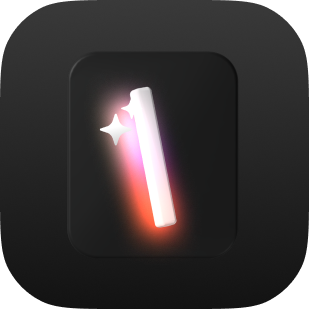
Use Typebot's conversational forms to simplify data collection and boost engagement.
No trial. Generous free plan.
Automate Candidate Screening and Interview Scheduling
The hiring process often involves sorting through many unqualified applications, managing scheduling conflicts, and handling repetitive administrative tasks. Modern HR chatbots act as smart filters that simplify these steps while keeping a personal touch where it matters most.
Pre-qualify Applicants with Dynamic Forms
Traditional job applications are outdated. Typebot’s adaptive screening uses forms that change in real time based on candidate answers. For example:
- If a marketing applicant confirms design experience, the chatbot asks for a portfolio link.
- For engineering roles, it moves directly to technical questions.
This method mirrors Unilever’s approach. Only a small percentage of applicants reach recruiters, yet candidate satisfaction has improved significantly. Dynamic forms help focus on relevant skills and reduce unnecessary steps for candidates.
Sync Calendars For Interview Booking
Recruiters spend hours for weeks coordinating interview times. Chatbots fix this by connecting directly to calendars like Google or Outlook, showing real-time availability.
When Airbus adopted this system, most interviews were scheduled outside regular hours, making it easier for global candidates. This integration saves time and reduces scheduling conflicts.
Typebot Implementation Tip: Conditional Logic for Role-Specific Questions
Avoid generic screening by creating tailored paths, such as:
- Asking sales candidates to submit a short voice pitch
- Having developers complete coding challenges in real time
- Requesting managers to explain how they would handle team conflicts
This strategy, inspired by leading AI-driven platforms, improves hire quality by focusing on contextual fit rather than just keywords. Conditional logic ensures candidates face relevant questions that reveal their true capabilities.
Automating early hiring stages actually makes the process feel more personal. Candidates receive timely updates instead of generic rejections.
HR professionals can focus on building relationships and delivering a better candidate experience. This approach empowers recruiters to concentrate on what they do best.
Curious how to integrate these tools into your own hiring workflows? Check out this guide on how to add a chatbot to WordPress and start optimizing your candidate experience.
The Silent HR Partner That Never Sleeps
HR teams spend nearly a third of their time answering repetitive questions about parental leave, tax forms, or retirement plans. These routine inquiries delay responses and burden HR staff with administrative tasks.
An always-on digital assistant solves this problem. Unlike human teams limited by office hours and time zones, AI-powered chatbots operate 24/7.
They handle most routine questions without human help. For example, Airbus’s Bessie chatbot manages thousands of queries monthly, with many coming after hours. This means employees get instant support, and HR teams focus on strategic work.
Centralizing The Chaos
Johnson & Johnson’s chatbot goes beyond repeating policy details. It guides employees through tailored scenarios, such as comparing plans based on family size and salary. This personalized help led to a significant drop in HR support tickets related to benefits.
Typebot adds smart, dynamic logic to this process. When someone asks about their PTO balance, the chatbot can:
- Access real-time data from HR systems
- Calculate accruals based on tenure
- Show a visual calendar of available days
- Start a leave request
All these steps happen in one smooth conversation.
From Reactive To Predictive
Advanced systems like EY’s payroll chatbot anticipate employees’ next questions. For example, a query about paycheck deductions triggers the bot to provide related tax forms. Also, deadlines, and links to update withholdings. This reduces follow-up questions.
Typebot’s branching logic supports these proactive conversations by learning from real employee interactions.
The key metric is how many questions get resolved without human help. Master of Code Global’s Slack chatbot handles most HR inquiries independently while logging unresolved cases for human follow-up. This approach maintains efficiency without losing the personal touch for complex issues.
The Empathy Algorithm
Some worry chatbots lack genuine empathy, but thoughtful design changes that. When an employee faces a family emergency, Typebot can:
- Respond with understanding ("This sounds difficult—I’m here to help")
- Share relevant policy information immediately
- Offer a private way to connect with counselors
- Set reminders for HR to follow up
This mix of automation and emotional intelligence improves satisfaction, especially for sensitive topics. Companies using emotionally aware chatbots report better feedback compared to basic FAQ bots.
Looking ahead, chatbots gain power by learning from every conversation. They spot patterns like repeated benefits questions revealing unclear policies or frequent IT requests highlighting onboarding gaps.
These insights help HR teams shift from just answering questions to actively improving the employee experience.
Performance Review Scheduler Chatbot – How To Create It With Typebot
Performance reviews are essential for employee development, but coordinating them is time-consuming for HR teams. This simple Typebot chatbot automates the process of:
-
Collecting availability from employees
-
Logging performance review appointments into a spreadsheet
-
Reducing the need for back-and-forth emails
By using this chatbot, HR teams save time, avoid missed deadlines, and ensure consistency in the performance management cycle. Without needing any technical team. Let us show this with an example scenario.
Step-by-Step Breakdown of the Chatbot Flow
This bot is collects the employee’s name, preferred date and time for the performance review. After that, it logs that data into a spreadsheet automatically.
Step 1: Welcome Message
- Drag a Text block from Bubbles block.
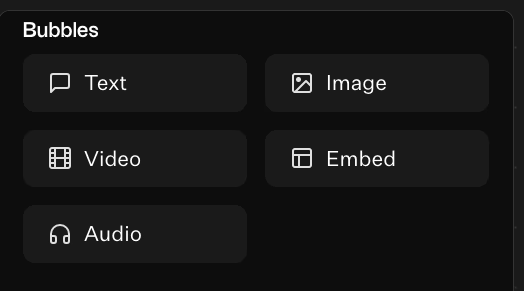
- Let's write a text like: Welcome. I’m your Performance & Feedback Assistant. I’ll help you schedule your review, complete your self-evaluation, and send feedback to HR. Shall we begin?
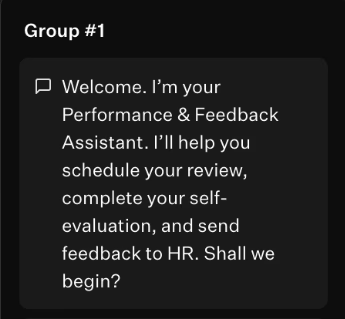
- Add Buttons from Input block:
“Yes, let’s start!” → continues the flow
“No, thank you.” → ends the flow or shows an exit message
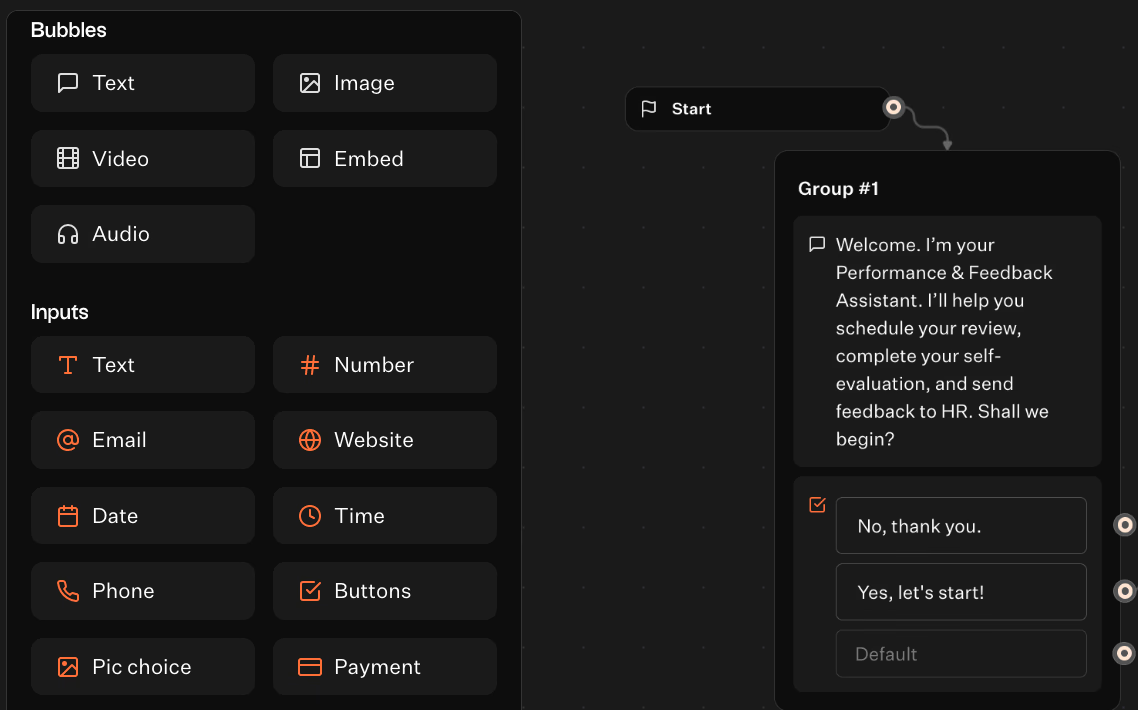
Step 2: Ask for Employee Name
- Drag a Text Input.
- Write to placeholder: Please type your name.
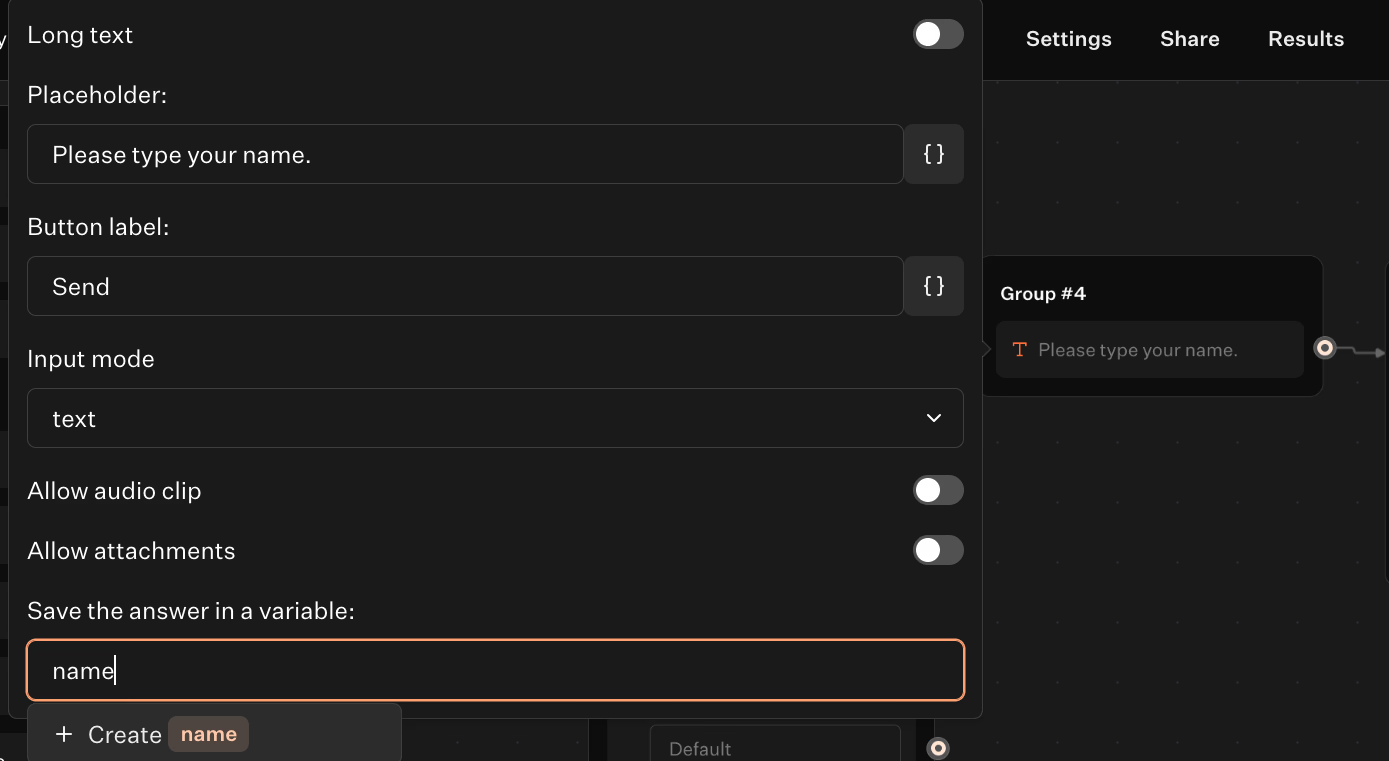
- Fill save the answer in a variable bar. Let's label it as
name. Click Create.
Step 3: Let Employee Choose Date and Time
-
After these drag Date Input and Time Input
-
Add a Text block on top of it. Let's write a text like: "When would you prefer to meet with your manager for your performance review?
-
Do not forget save the answers as variables. You write "date", and "time".
-
Also, you can change the date and time formats from these menus.
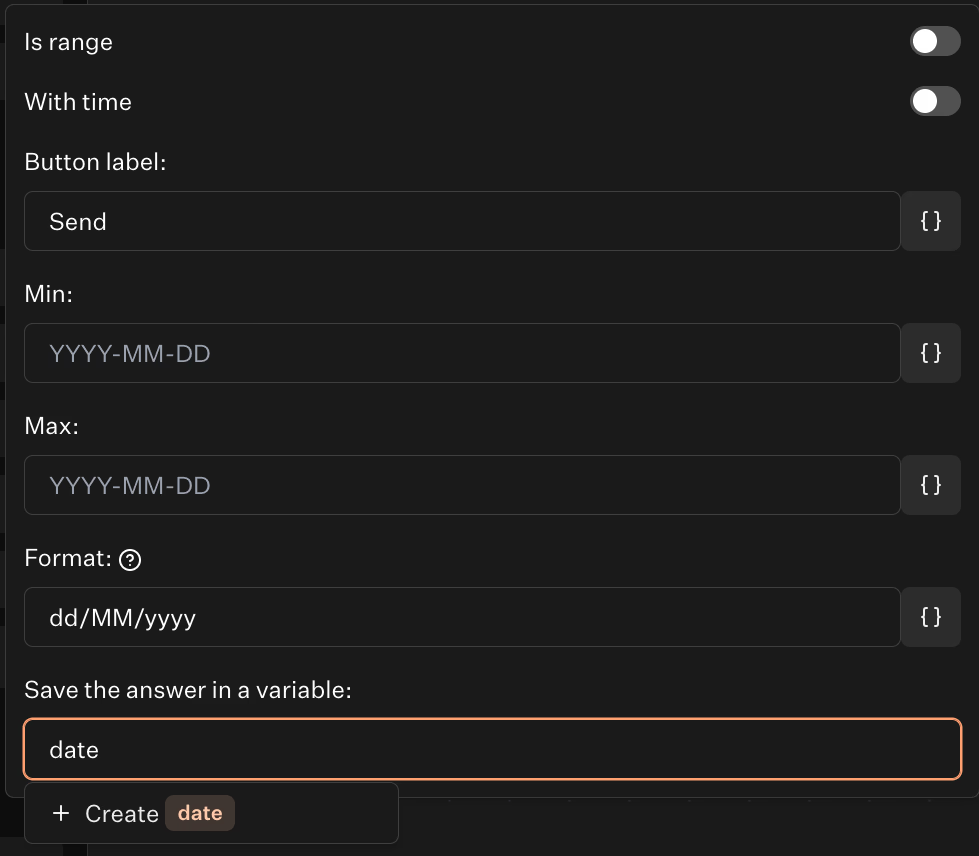
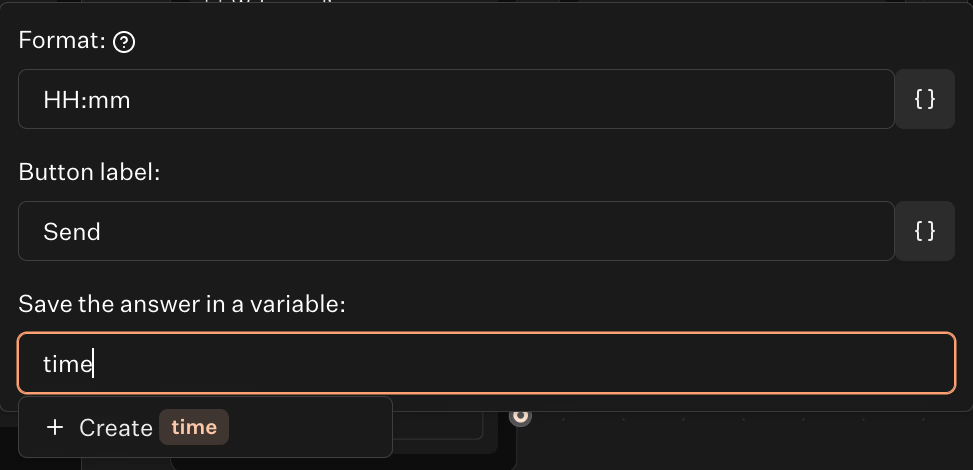
Step 4: Confirmation and Sheet Integration
- Drag a Text block again. Type: Thank you! Your appointment has been set.
- Embed a Sheet block from Integrations block.
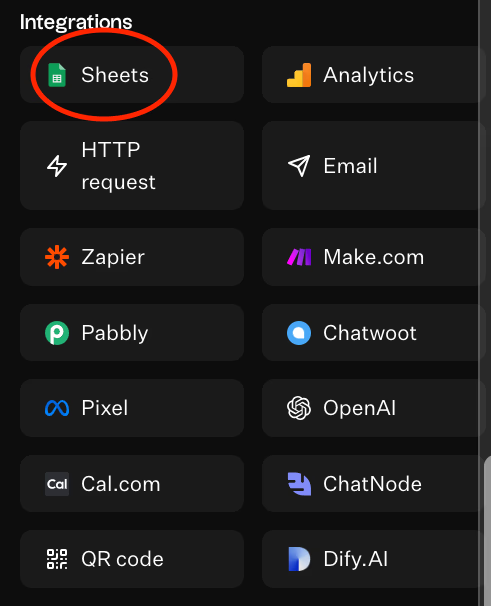
- Do not forget to select your account and sheet. Also, you have to create columns as date time and name. All the collected data will be shown on here.

- Select Insert row.
- Add the values.
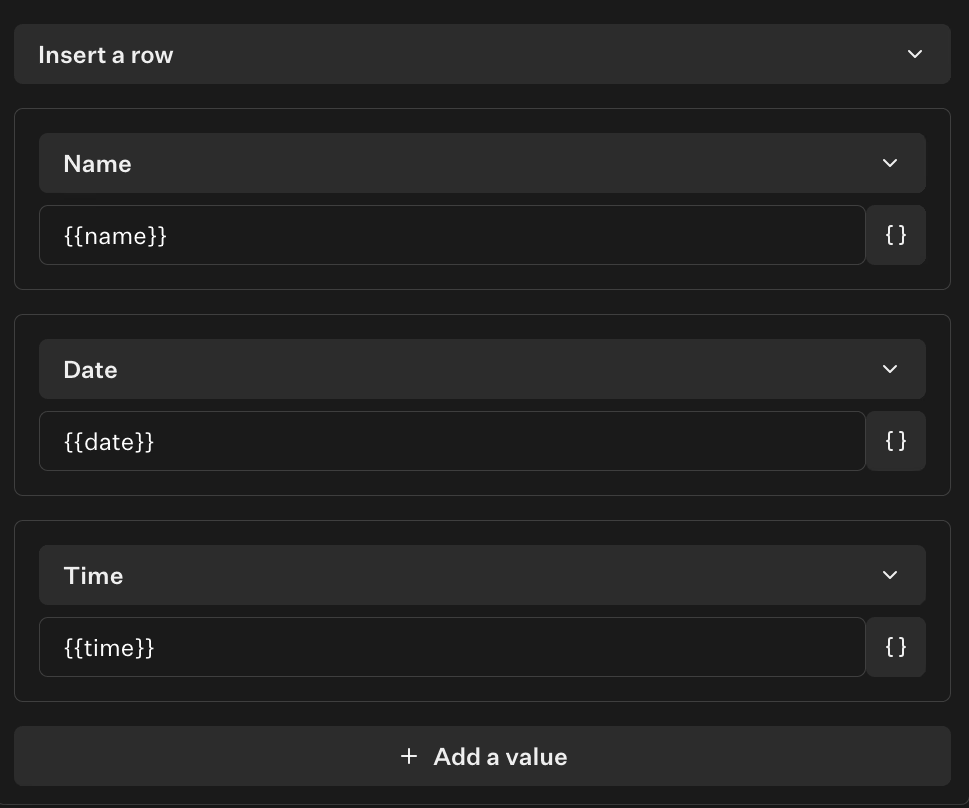
You are all set! This is the final form of the flow:
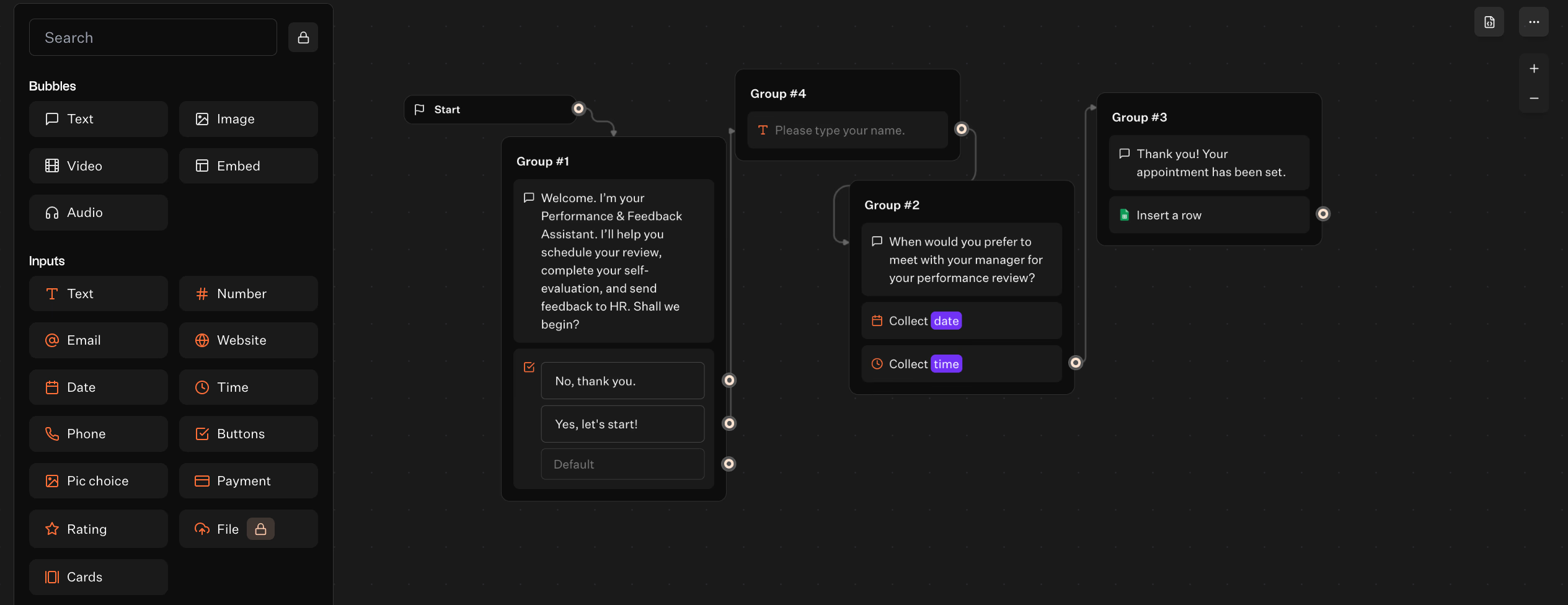
How to Use This Flow
-
Embed it in your company’s HR portal
-
Share it via Slack or email
-
Collect responses in a shared Google Sheet for easy scheduling
-
Clone and modify the flow for:
-
Probation reviews
-
360 feedback intake
-
Goal alignment meetings
-
Measuring Chatbot Impact
As HR chatbots become more sophisticated, so does the ability to measure their impact.
Modern platforms like Typebot offer built-in analytics dashboards that track key performance indicators (KPIs). Such as average response time, resolution rates, and employee satisfaction scores after each interaction.
Typebot analyze these metrics. HR leaders can identify which workflows are most effective and where employees still encounter complications.
For example, analytics reveal that 80% of PTO requests are handled without human intervention. It’s a signal to improve the benefits knowledge base or the chatbot’s training in that area.
Over time, this data-driven approach ensures continuous improvement and maximizes the return on investment.
Regularly export chatbot conversation logs (anonymized for privacy) and review them with your HR team. Look for recurring questions, points of confusion, or feedback about the chatbot’s tone. This iterative process helps you fine-tune both the content and the experience.
Safeguarding Sensitive HR Data
With chatbots handling personal employee information, data privacy and compliance become paramount. Leading HR chatbot examples are designed with enterprise-grade security in mind. Look for platforms with ISO 27001 certification, which ensures comprehensive information security management systems. These platforms offer end-to-end encryption, secure authentication, and compliance with regulations such as GDPR and HIPAA.
When deploying a chatbot, ensure it only accesses necessary data. All integrations with HRIS or payroll systems use secure APIs. Set clear permissions for who can view or export data. Provide employees with transparency about how their information is used and stored.
Include a brief privacy notice in your chatbot’s introduction. This reassures users that their data is confidential and outlining how it will be used. With that, you can build trust and encourage higher adoption rates.
Final Words
Looking ahead, the next wave of HR chatbots will be defined by three major trends. Deeper AI integration, greater empathy, and a shift toward strategic partnership.
With advancements in NLP and generative AI, chatbots will be able to handle even more complex conversations. Plus, they will resolve complex issues, and provide context-aware recommendations.
Empathy will remain a core differentiator. Chatbots that can recognize emotional cues, respond with appropriate sensitivity. Also, these bots escalate when needed will drive higher satisfaction and trust.
Meanwhile, as chatbots take on more routine tasks, HR professionals are freed to focus on strategic initiative. Such as talent development, culture building, and organizational transformation.
The most successful HR teams in 2025 will be those that view chatbots not as a replacement for human connection. But, as a powerful tool for amplifying it.

Create fully customizable chatbots without writing a single line of code.
No trial. Generous free plan.